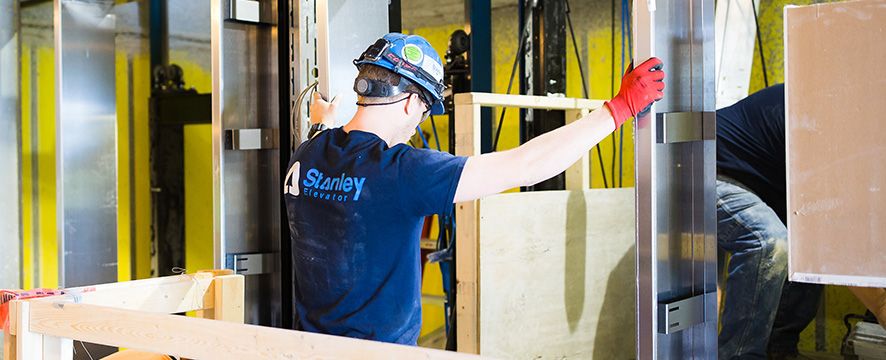Stanley Elevator Now Installing Green Elevator Cabs

Stanley Elevator Company is the exclusive distributor for TK Elevator in Maine, New Hampshire, and northeastern Massachusetts. As a representative of the TKE product line, we are proud to announce that we will be installing elevator cabs that comply with the strict requirements of CA 01350 for low VOC emitting materials. Improving the indoor air quality of our elevator cabs is just one of the many ways we are striving to be New England’s most environmentally conscious elevator company.
Please see the press release from our manufacturer below, and don’t forget to check out more ways we can help you design and install eco-friendly elevators:
Alpharetta,GA (September 30,2011) – TK Elevator Americas today announced that UL Environment has validated the environmental claims for low volatile organic compound (VOC) emitting material in its standard elevator cab line per California’s Section 01350. A strict audit was performed to test the indoor air quality of the cabs. The conclusive and independent third-party validation process is another step toward a green product line which already includes standard added urea-formaldehyde-free wood products, Microban® antimicrobial protected pushbuttons and powder coating in lieu of traditional solvent-based paint.
“As the first manufacturer in our industry to work with UL Environment on this type of initiative, we are proud to receive an official validation of the emissions within our standard elevator cabs,” said Brad Nemeth, director of sustainability for TK Elevators Americas. “Our company has taken a significant step towards evaluating and reducing the impact of our building materials on the indoor air quality of our standard elevator cabs. We hope this validation becomes a major driving force behind the entire industry creating more environmentally friendly products and overall healthier buildings.”
For more than a century, UL has helped manufacturers bolster consumer confidence in selecting better products. The Environmental Claims Validation (ECV) service launched through UL Environment builds another layer of trust for these types of product claims. Under the ECV service guidelines, each validated environmental claim is periodically reassessed to ensure consistent performance characteristics and continued compliance with the applicable standard.
“UL Environment congratulates TK Elevator Americas for helping to create higher quality indoor air environments,” said Stephen H. Wenc, president of UL Environment. “By completing the program, they are demonstrating a further level of commitment to transparency, which helps architects, designers and engineers identify products that deliver on their environmental health claims.”
The claim for TK Elevator Americas was validated using the California Department of Public Health (CDPH) Standard Method for the Testing and Evaluation of Volatile Organic Chemical Emissions from Indoor Sources Using Environmental Chambers Version 1.1, Feb 2010, commonly referred to as CA Section 01350. CA 01350 is a Special Environmental Requirements standard specification developed by the State of California to cover key environmental performance issues related to the selection and handling of building materials. The key elements affecting indoor air quality are in the specification for screening building materials based on the following: emissions testing protocol, hazardous content screening, and avoiding mold and mildew from construction practices.
TK Elevator Americas is working hard to embed sustainability within the core operations and culture of the company. In addition to the validation, TKE has standardized the use of particleboard with no added urea-formaldehyde to comply with IEQ credit 4.4 and has moved to a powder-coat line for all interior coatings. The validation also helps this elevator model qualify for innovation credits referencing pilot credit 43, through the LEED program. The company continues to be a leading industry advocate for helping building owners, facility managers, elevator consultants and architects reduce the total impact of their built environment.
